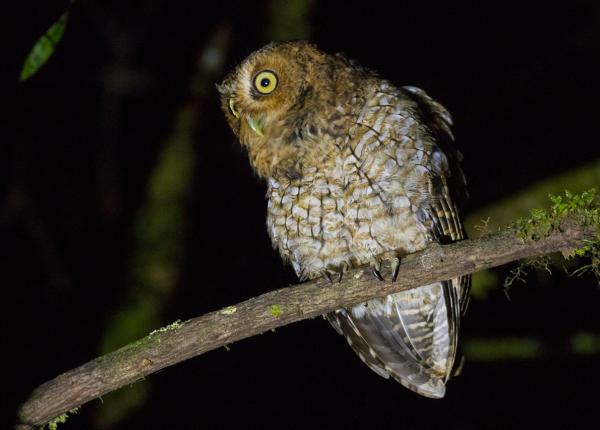Did You Know?
- This owl has been known to hunt insects that are attracted to artificial lights.
- Only one nest of this species has ever been found. It was in Costa Rica in 1994.
How The Peregrine Fund is Helping
Though The Peregrine Fund does not work directly with Bare-shanked Screech-owls, our efforts in scientific research, habitat conservation, education, and community development help conserve birds of prey around the world. We also supply literature to researchers from our avian research library, which helps scientists around the world gather and share important information on raptor conservation. Our work with the Neotropical Raptor Network helps conserve raptors by fostering collaboration and communication among raptor enthusiasts in the region. And, finally, our support of the Global Raptor Information Network gives raptor researchers tools to more efficiently conduct their own studies while contributing to a global program. It also provides citizen scientists a way to participate in raptor science and conservation.
Where They Live
The Bare-shanked Screech-owl is a Neotropical species found from Costa Rica to northern Colombia. It makes its home in humid, mountain forests, along forest edges and in cloud forests.
Why They Need our Help
This owl is categorized as a species of Least Concern, but it is vulnerable to habitat change.
What They Eat
These lovely owls feed mainly on larger insects such as grasshoppers, beetles, and crickets. It will also prey upon spiders and rodents. It begins hunting at dusk and into the night. It will snatch its prey from branches or along the ground.
Nests, Eggs, and Young
There is so much scientists still need to learn about the breeding biology and behavior of this species. We know it lays eggs in natural tree cavities. Apart from this, not much else is known.
Bare-shanked Screech-0wl and the World Center for Birds of Prey
The World Center for Birds of Prey offers fun ways to learn about raptors. Interactive activities, tours, interesting videos and a children's room with activities from coloring sheets to quizzes to costumes await you. At our visitor center, you can see live owls up close - such as a Verreaux's Eagle-owl or a Western Screech-owl, and learn about the wonderful and interesting adaptations they have in order to survive in their respective habitats. There is also a touch table with owl feathers and other natural objects available for exploration. Take a stroll along a short nature trail and look for Barn Owls or even a Northern Saw-whet Owl perched in the trees.
References:
Holt, D. W., R. Berkley, C. Deppe, P. L. Enríquez, J. L. Petersen, J. L. Rangel Salazar, K. P. Segars, K. L. Wood, and J. S. Marks (2020). Bare-shanked Screech-Owl (Megascops clarkii), version 1.0. In Birds of the World (J. del Hoyo, A. Elliott, J. Sargatal, D. A. Christie, and E. de Juana, Editors). Cornell Lab of Ornithology, Ithaca, NY, USA. https://doi.org/10.2173/bow.bssowl.01










